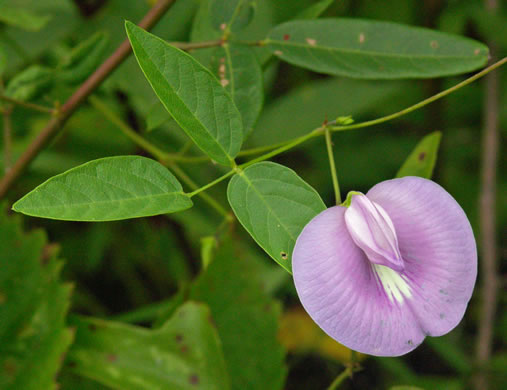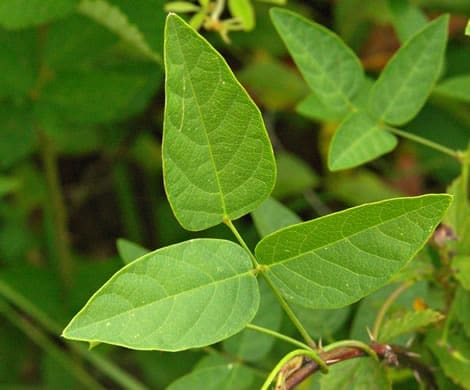Fabaceae
spurred butterfly pea
Centrosema virginianum
Synonyms
Bradburya virginiana, Centrosema virginianum var. genuinum, Clitoria virginiana, Cruminium virginianum, Nauchea virginiana, Vexillaria virginiana
Other Common Names
blue bell, butterfly pea, wild blue vine, wild pea
Plant Type
Vine
Life Cycle
Perennial
Typical Size
1 - 3 ft. tall
Tolerant of
Drought
Inolerant of
Poorly Drained Soil
Propagation
By seed
Plant Propagation Notes
Scarification is recommended before sowing.
Plants/Diseases
No significant disease or pest issues.
Wildlife Benefits
Nectar/pollen source for pollinating insects, Host plant for butterfly larvae
Leaves
Leaves are compound (3 leaflets), alternate, entire, and lanceolate to ovate. Leaves are 1 – 3 inches long and less than 1 inch wide.
Flowers
The 1 – 3 inch flowers are typically violet and appear in a raceme in clusters of 2 – 4. Flowers are similar to Clitoria mariana, but the largest petal has a deeper scoop shape.
Fruit
Fruit is a pod that ejects seeds when ripe.
Toxicity
No known toxicity.
Ethnobotanical Use
It is used to treat unspecified medicinal disorders.

USDA Hardiness Zones
5, 6, 7, 8, 9
Light Exposure
Full Sun, Part Sun/Shade
Soil Moisture
Dry, Medium, Moist
Soil Drainage
Well-drained
Soil pH
Acidic (less than 6.0), Neutral (6.0-8.0), Basic (greater than 8.0)
Native in South Carolina?
Yes
Plant Native Habitat
This vine typically grows in dry, sandy soils.
Global Conservation Status (NatureServe)
Secure (G5)
Federal Conservation Status (USFWS)
Not Listed
Distribution Notes
Common throughout South Carolina.



